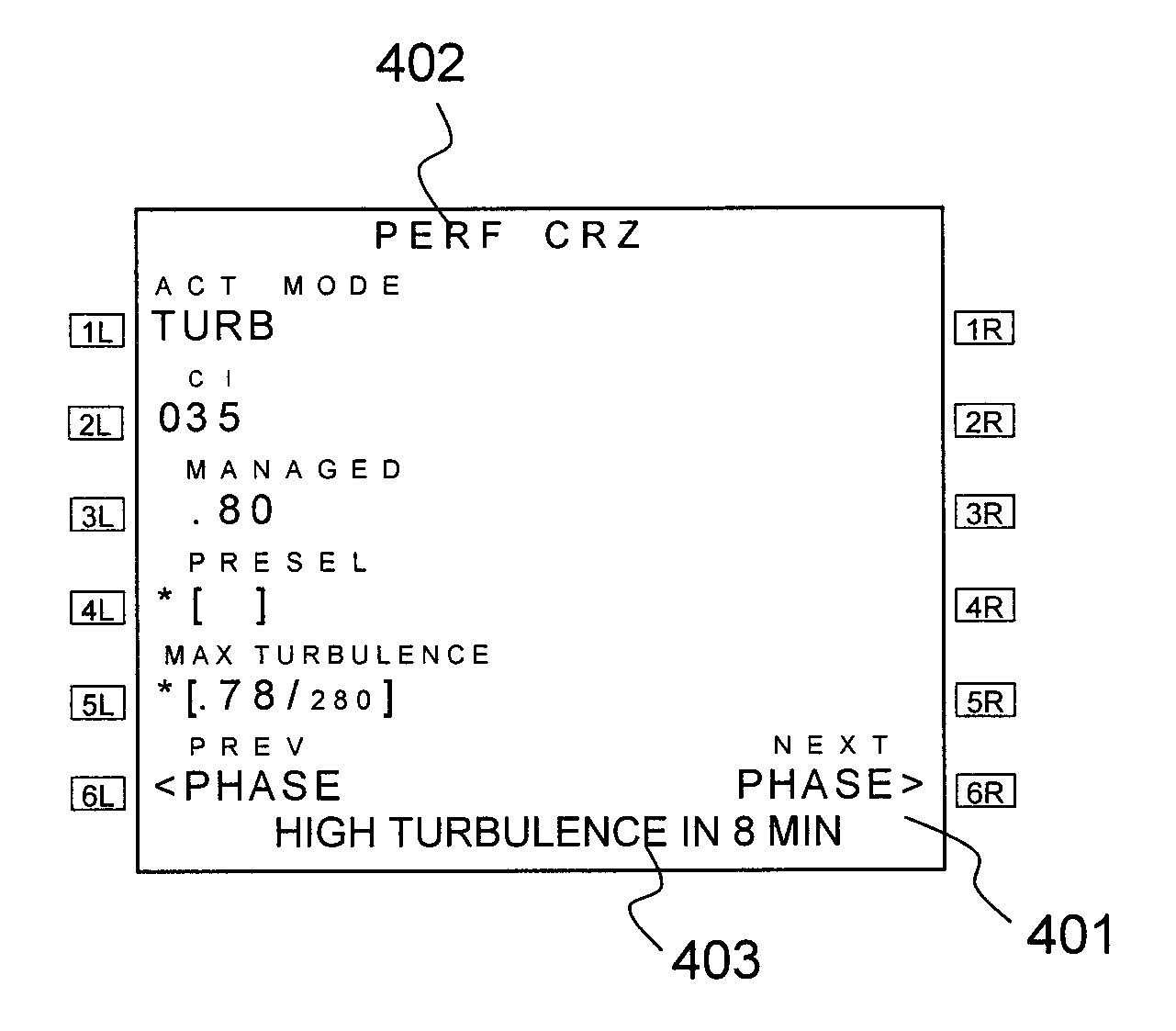Method of automatically managing the speed of an aircraft in turbulent air and device for its implementation
a technology of automatic management and speed, applied in the direction of vehicle position/course/altitude control, process and machine control, instruments, etc., can solve the problems of turbulence, accidents, and the loss of control of the craft, so as to achieve optimal turbulence speed, simplify and automate the speed management, and avoid the effect of accidents
- Summary
- Abstract
- Description
- Claims
- Application Information
AI Technical Summary
Benefits of technology
Problems solved by technology
Method used
Image
Examples
Embodiment Construction
[0037]Generally, an FMS architecture, illustrated in FIG. 1, comprises a set of functions and a basic set of databases such as monitoring of the context 108, guidance 106, predictions 104 notably regarding flight time and fuel consumption, flight plan 101 consisting of a string of points and segments connecting them, trajectory calculation 102 established on the basis of the elements of the flight plan and the setpoints for tracking the flight plan and location 107. The set of databases comprises notably a navigation database 103 and a database of performance ratings 105 containing various characteristics and limits of the aircraft.
[0038]The FMS is interfaced with an automatic pilot 109, sensors 110 for location, a radio link (digital or analog) 111 with other airplanes or with the air traffic control enabling them to exchange information notably regarding their position (longitude, latitude, altitude) and their speed or else relating directly to turbulences, as well as a weather ra...
PUM
 Login to View More
Login to View More Abstract
Description
Claims
Application Information
 Login to View More
Login to View More - R&D
- Intellectual Property
- Life Sciences
- Materials
- Tech Scout
- Unparalleled Data Quality
- Higher Quality Content
- 60% Fewer Hallucinations
Browse by: Latest US Patents, China's latest patents, Technical Efficacy Thesaurus, Application Domain, Technology Topic, Popular Technical Reports.
© 2025 PatSnap. All rights reserved.Legal|Privacy policy|Modern Slavery Act Transparency Statement|Sitemap|About US| Contact US: help@patsnap.com



